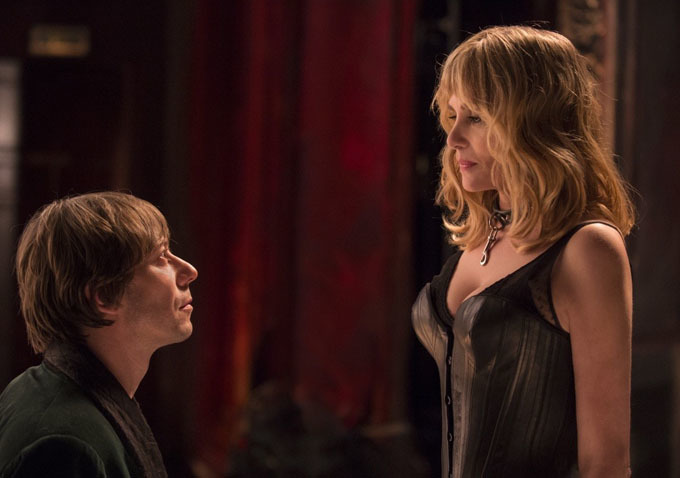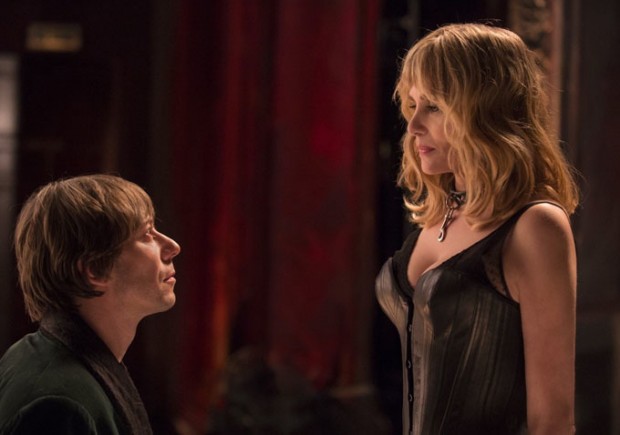
Because, in the pressure to scramble together something before 2014 is a distant memory, I can think of hardly anything that defines this year to some significant degree, allow this shorter, still-definitive statement: it was a really good twelve months.
Wait, no — please don’t click away that quickly. If some of the capsules contained herein are a bit more terse than other write-ups you’ve encountered on this site and others, it’s primarily because these films stayed with me longer than a majority of those on previous year-end lists; although some were seen within the past two weeks (those who know my cinematic habits know that I’m terrible at keeping up with current releases), the rest have been allowed to sit for months, in some cases most of 2014, or are still dawning upon me in various ways. In other words: I’ve ruminated on some of these for so long, and have become so confident as to why I love them, that I don’t feel the greatest need to equate certain feelings with why they’ve ended up here — or “there,” for that matter. Should I get into questions of how one ranks higher than the other — my #7 could easily be my #6 (both represent the staking-out of new frontiers for the medium), #4 could easily wind up in second place if I were so inclined, etc. — no one will go home happy.
And, excepting the few that couldn’t be seen — Maidan, Winter Sleep, Leviathan, National Gallery, and The Strange Little Cat are stand-outs — on account of inconvenient logistics or bad timing (i.e. I was tired of being plunged into catch-up mode since mid-December), this is one of the more complete year-end considerations I’ve ever done. So good, actually, that an old practice is being jettisoned: while Mia Hansen-Løve’s Eden, Spike Lee’s Da Sweet Blood of Jesus, and Olivier Assayas’ Clouds of Sils Maria are all great films that I saw this year, they will not be in distribution until 2015. Considering that 70% of the selections on this list premiered in 2013 — and considering the fact that I’m actually cheating a bit for one high-ranking title — it only seems fair to bump back future contenders in favor of several you’re far more likely to see at shorter notice. Those others will just have to fend for themselves between next January and December.
Honorable Mentions

10. Manakamana (Stephanie Spray & Pacho Velez)
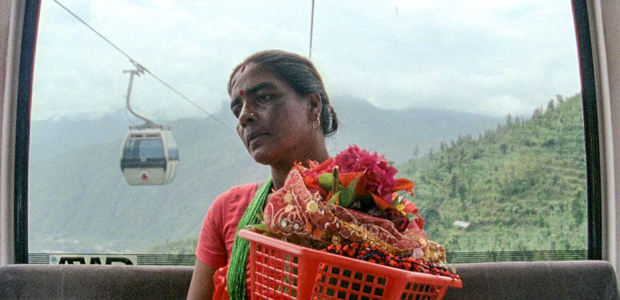
As if the people of Harvard’s Sensory Ethnography Lab (by now some of the most adventurous in all of cinema) said, “Let’s remake Holy Motors as seen through the conceit of Michael Clayton’s final shot.” If Manakamana weren’t an illuminating window into many of the seemingly simple processes that constitute everyday living — to say nothing of how it marks new ways of absorbing the cinematic image — and only these comparisons stood, I would remain fond.
9. Life of Riley (Alain Resnais)
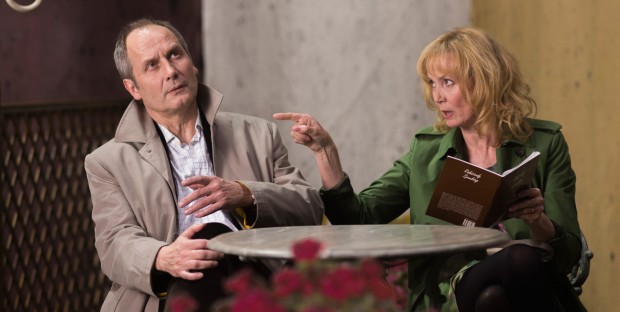
No, Life of Riley can’t and won’t ever be removed from the context of its creator’s passing, but the resulting points between art, life, and death upon which every seconds thus operates makes clear that it shouldn’t. On paper an absolute downer — and, frankly, sometimes is; how can an extended close-up of Sabine Azéma professing her love for an unseen collaborator not be? — but, in execution, a comic celebration of the limited life affords us, bolstered by a fascinatingly complex visual and aural orchestration. Resnais, ending his career on just about the best closing images any filmmaker could ever ask for, leaves us with no option but to do what its French title suggests: enjoy, drink, and sing.
8. Listen Up Philip (Alex Ross Perry)
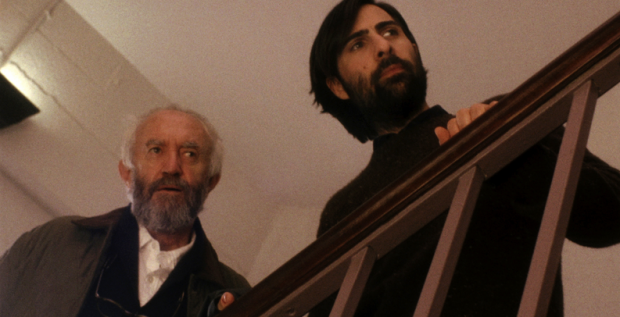
The slow-motion, bronze-burnished descent into personal desolation, itself suggested as some men’s only way of ascending to artistic greatness. Already-mild concerns that we’d never receive a proper adaptation of Roth are forever gone, for Listen Up Philip’s commitment to this idea — aided in no small part by Perry’s growing formal acuity — brings us as close as we’ll ever need to get. Zuckerman, Lonoff, and, at some turns, Sabbath do indeed haunt the film’s periphery, but less as a result of direct influence — more, I think, because we’ve only now confronted the wreckage they leave behind.
7. Closed Curtain (Jafar Panahi & Kambuzia Partovi)
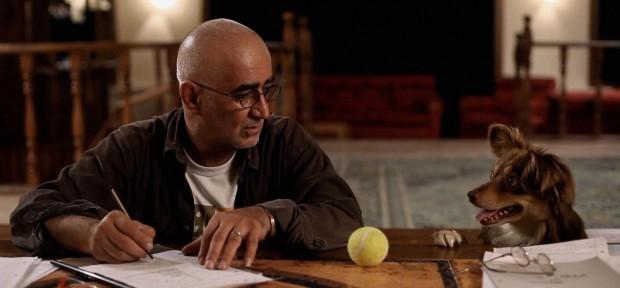
Images within images, narratives within narratives, images as a means of advancing narrative, narrative as a means of undercutting the perceived truth of an image. Panahi’s second feature made under a decades-long filmmaking ban is initially dizzying in its onslaught of vague suggestions and dreamlike play with cinematic language, but the casual transition from intimate chamber drama to meta-textual rumination on one’s place in the world — and, tragically, Panahi questioning what anyone’s might be when no can hear your voice — exposes an emotional center so crystal-clear that Closed Curtain‘s mysteries need never be unlocked.
6. Goodbye to Language (Jean-Luc Godard)
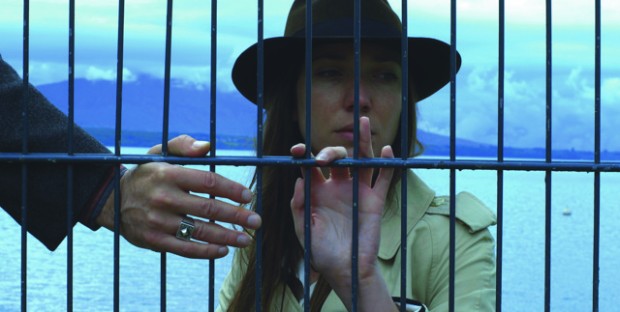
There may come a day when language has perished, love is gone, ideas no longer hold influence, art has lost its value, and only dogs rule the Earth — but if it is a day in which this film continues to exist, that should be a fair trade.
5. Stranger by the Lake (Alain Guiraudie)

A hyper-erotic thriller presented as a waking dream, in which acts of love and violence — both acts of passion alike, if little else — alternate between escape-defying proximity and distances so great they can hardly be said to have been seen at all. Also the “pulpiest” title on this list, sure, but pulp that’s dictated by incredibly consistent formal dressing from first step to last is always going to be high art in my eyes, and nothing in 2014 hit that (ahem) sweet spot to such a degree.
4. Journey to the West (Tsai Ming-liang)
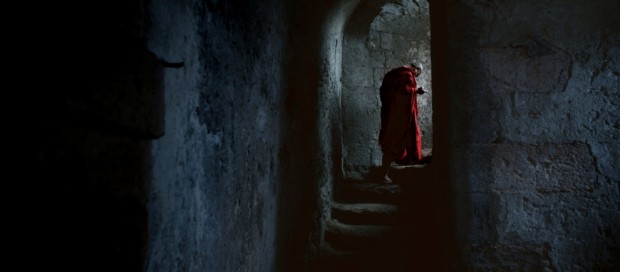
Remarkable for many reasons, chief among them that the shortest of any on this list — or just about any other, on any site, that’s counting down the year — is the one most open to interpretation, to say nothing of the most visually rigid and tightly controlled most encouraging a wandering, curious eye. A tortoise-and-the-tortoise race between Lee Kang-sheng and Denis Lavant, slow cinema’s own weird game of Where’s Waldo?, a city symphony that uses screen space as well as anything in recent years, and a stealth addition to the slate of documentary-narrative hybrids. Journey was technically undistributed, but placed here because it a) was at least made available during a one-week online engagement this past spring, and b) is simply too accomplished a work to be overlooked on account of that small technicality. Here’s some good news: this wonder will be included on the Blu-ray release of Tsai’s prior feature (and TFS favorite), Stray Dogs.
3. Only Lovers Left Alive (Jim Jarmusch)
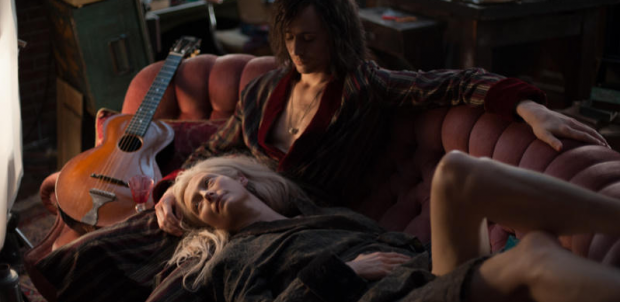
Enduring a climate of daily takedowns, contrarian posturing, cries of yearning for decades past, and ruminations on what it all really means would usually ensure that any film operating on a similar wavelength — while acting in service of one of the most worn-down genre staples this popular culture can offer — sounds, in so many words, like an absolute fucking nightmare. But this particular marriage of auteur and being is as logical as they come, and questions of how easy it might have been to achieve the resulting effect are easily dispelled when wallowing in something of such deep, resonant beauty.
2. Venus in Fur (Roman Polanski)
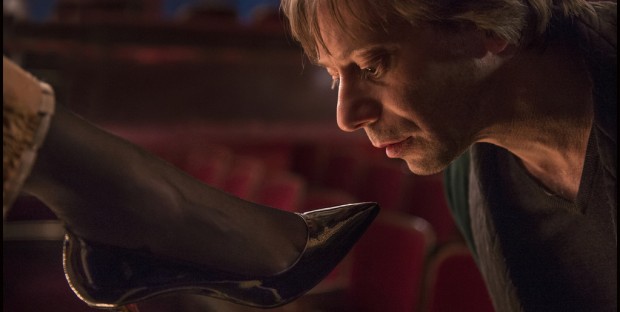
The director’s surrogate and doppelgänger, the director’s wife, a physical and mental game of one-upmanship, and the unabashedly blunt staging of a text that a toddler could point out as a direct corollary to the knotty onscreen dynamic. Shaped by a milking of every line, expression, tone of voice, gesture of body, shifting of light, angle, and cut, Polanski’s funniest film in decades, another close-quarter wonder, couldn’t be more “cinematic” if it relied on elaborate sets and high-wire formal trickery.
1. The Immigrant (James Gray)
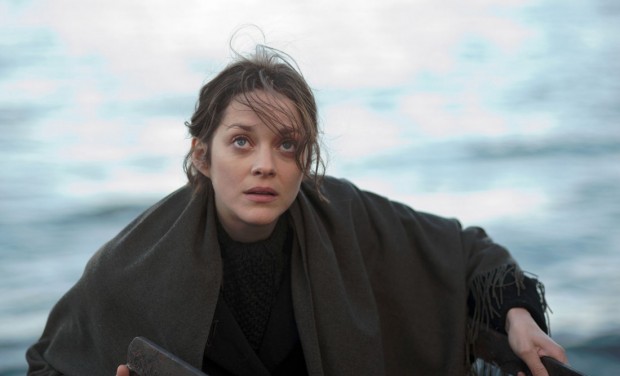
A work of such immaculate construction, such graceful complexity, such pure empathy, that one of the greatest final shots in all of cinema hasn’t constantly been at the forefront of my mind.

